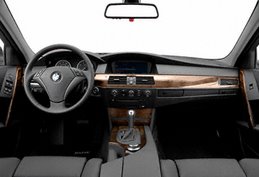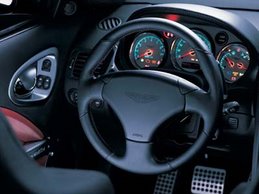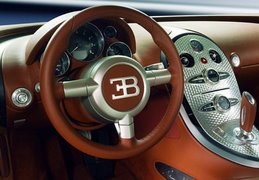 2008 Toyota Sequoia Platinum 4WD
2008 Toyota Sequoia Platinum 4WD - This is a bit unfortunate, as we were hoping to help Toyota find a new name for its largest SUV, the all-new 2008 Sequoia, which is so big that keeping the Sequoia name seems slightly modest. But if the Sequoia is already the largest tree, then it looks like we, and Toyota, are stuck with it.
The biggest news is under the hood, though. Previously, the best we could do in the Sequoia was the standard 273-hp, 4.7-liter V-8 and five-speed automatic transmission. That powertrain remains, but it’s supplemented by the Tundra’s beefy 381-hp, 5.7-liter V-8 with a six-speed automatic. The Sequoia can now tow a maximum of 10,000 pounds, up from 6500.
The 2008 Sequoia is offered in three basic flavors: the base SR5, the Limited—previously the premium model, now midlevel—and the absolutely loaded Platinum. The presence of the Platinum made us wonder why Toyota needed that model as well as the newly refreshed, Japanese-built Land Cruiser, and the answer is that they seem to appeal to two separate markets: Land Cruiser buyers have an average household income of $237,000; Sequoia buyers average “only” $106,000.
Toyota figures that 55 percent of 2008 Sequoia sales will be the SR5, 35 percent the Limited, and just 10 percent the Platinum. Rear- and four-wheel-drive sales should be split evenly. And Toyota has high expectations for the 5.7-liter V-8, figuring it will account for 90 percent of the product mix. One reason: It actually gets better fuel mileage than the 4.7. Neither will get kudos from the Sierra Club, though: EPA estimates for the four-wheel-drive models are 13 mpg city and 16 highway for

the 4.7, and 13 and 18 for the 5.7. We averaged 12 mpg, which included some light towing.
The Sequoia is one of the roomiest eight-passenger SUVs you’ll find, even in the third row: There’s only 1.1 fewer inches of legroom than in the second row, and about an inch less headroom and shoulder room. The seats fold flat, even the front-passenger seat. One neat touch: The Platinum has an optional center-row console that opens 180 degrees to create a tray for passengers and also allows for a flat cargo floor.
The Platinum, of course, has leather upholstery, but even the cloth seats in the SR5 are nicely done. In fact, unless you just like spending money, a well-appointed SR5 may be your best buy in the Sequoia lineup. If you want the power third-row seat, though, you’ll have to get the Limited or Platinum.
Safety features abound, all standard. They include front-seat side airbags, three-row curtain airbags, anti-lock brakes with brake force distribution and brake assist, and stability control. The four-wheel-drive system operates via a dash-mounted rotary switch that takes you from rear-drive to high range with either a locked or unlocked center differential, and to low range with a locked or unlocked center diff. We took a Sequoia off-road, and aside from the surprisingly tight 39-foot turning circle, it’s what you’d expect: big. Very big. One feature we like a lot: the optional backup camera.
No complaints about the 5.7-liter engine and six-speed transmission, though. This is a monster motor, and a problem

we’d experienced with a couple of Tundras—very aggressive, abrupt transmission downshifts as we slowed to a stop—wasn’t apparent here.
We can certainly see how a big, active family could embrace the Sequoia’s room and huge towing capacity, and if one of these vehicles were to show up again at the office during auto-racing season, count on its being signed out every weekend. But the vast majority of our day-to-day tasks could be handled easily by Toyota’s less-enormous offerings, such as the Highlander and 4Runner. That’s just us. If you need what the Sequoia offers, Toyota has packaged it nicely.
 2009 Honda Pilot vs. Ford Flex, Chevy Traverse, Hyundai Veracruz, Mazda CX-9, Toyota Highlander - Beat of a different Drummond: We compare six family haulers and, amazingly, drown none of them.
2009 Honda Pilot vs. Ford Flex, Chevy Traverse, Hyundai Veracruz, Mazda CX-9, Toyota Highlander - Beat of a different Drummond: We compare six family haulers and, amazingly, drown none of them.























